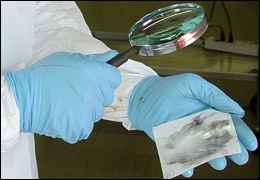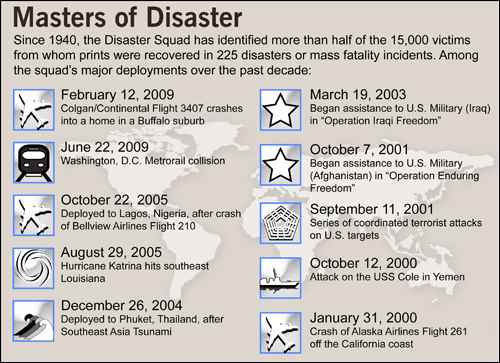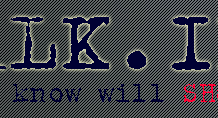The Disaster Squad
Serving in the Worst of Times
06/24/10
The Disaster Squad helps ID victims through fingerprints, palm prints, and even footprints.
When planes crash or natural disasters strike or terrorists attack, it’s often incredibly difficult to identify the remains of the victims. It requires special forensic expertise—as well as the ability to endure tough conditions and gut-wrenching scenes.
But it’s work that needs to be done—not only to help solve cases and address issues like insurance payments and settlement of estates, but just as importantly, to satisfy the very human need that families have to know the fate of their loved ones, to lay them to rest, and to gain some sense of closure.
It’s for all these reasons that we have a “Disaster Squadâ€â€”a team of highly-trained forensic examiners who are deployed worldwide at a moment’s notice to identify victims of mass fatality incidents. In some cases, their efforts support FBI investigations, but many times these professionals are simply providing a humanitarian service when asked for identification help by colleagues around the world.
The squad came into being seven decades ago—in the summer of 1940—when FBI agents and fingerprint experts were called to the site of a plane crash in a Virginia cornfield that killed all 25 on board, including two Bureau employees. When they arrived, our personnel found total chaos—no one seemed to know what to do or how to identify the victims. So we offered our fingerprint expertise and positively identified eight bodies—one of which had initially been misidentified through visual inspection. The episode made the Bureau realize the need for the scientific determination of identity at scenes of disaster, so we established a team of experts known as the Disaster Squad.
Today’s team is more capable than ever, using advanced scientific techniques and new technologies. The squad consists of latent print examiners from the FBI Laboratory who are experts in the field of friction ridge analysis.
Members of the Disaster Squad—who are sent out on a rotating basis, with team size determined by the severity of the incident—help identity victims through fingerprints, palm prints, and sometimes even footprints.
Once prints have been recovered from the deceased, examiners—working on site—can use mobile technology developed by the Bureau to search postmortem prints against the approximately 80 million antemortem prints housed in the Integrated Automated Fingerprint Identification System, maintained by our Criminal Justice Information Services Division in West Virginia.
If no identification is made, recovered prints can also be submitted to other federal, state, and local agencies for automated searches in additional fingerprint databases.










